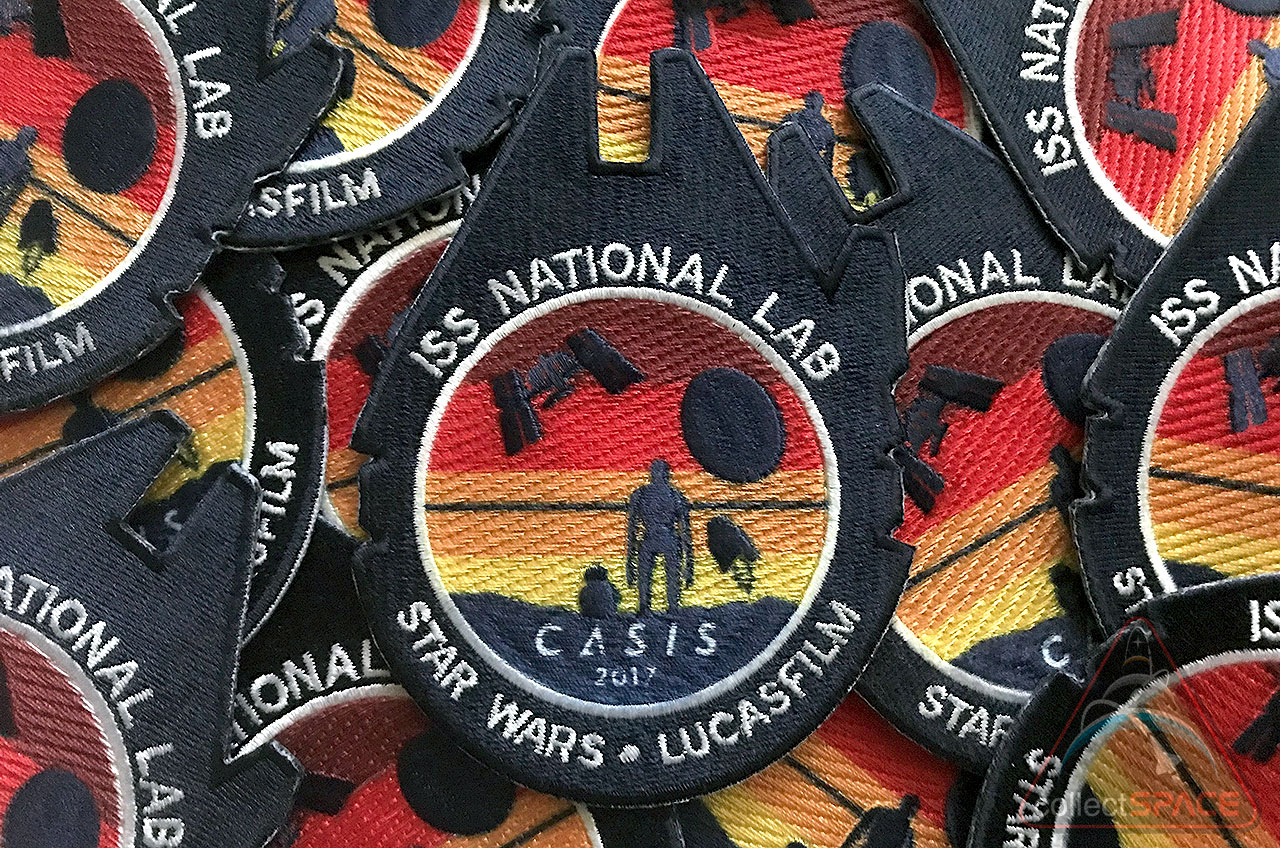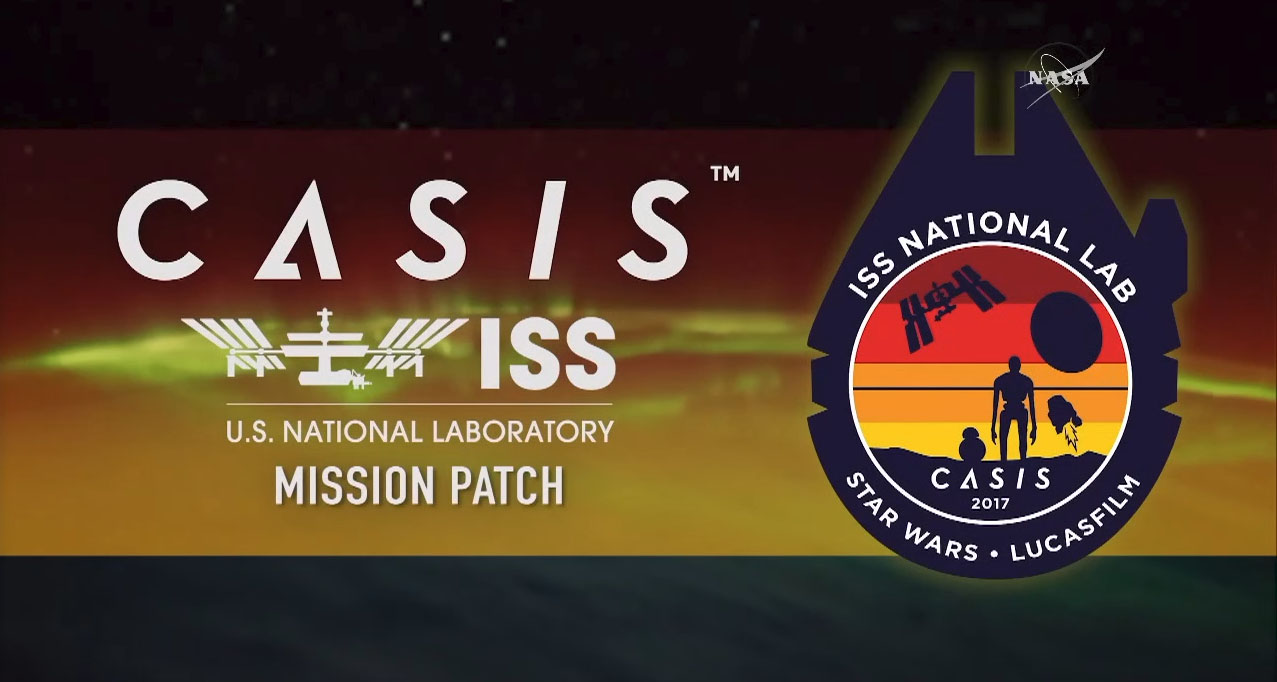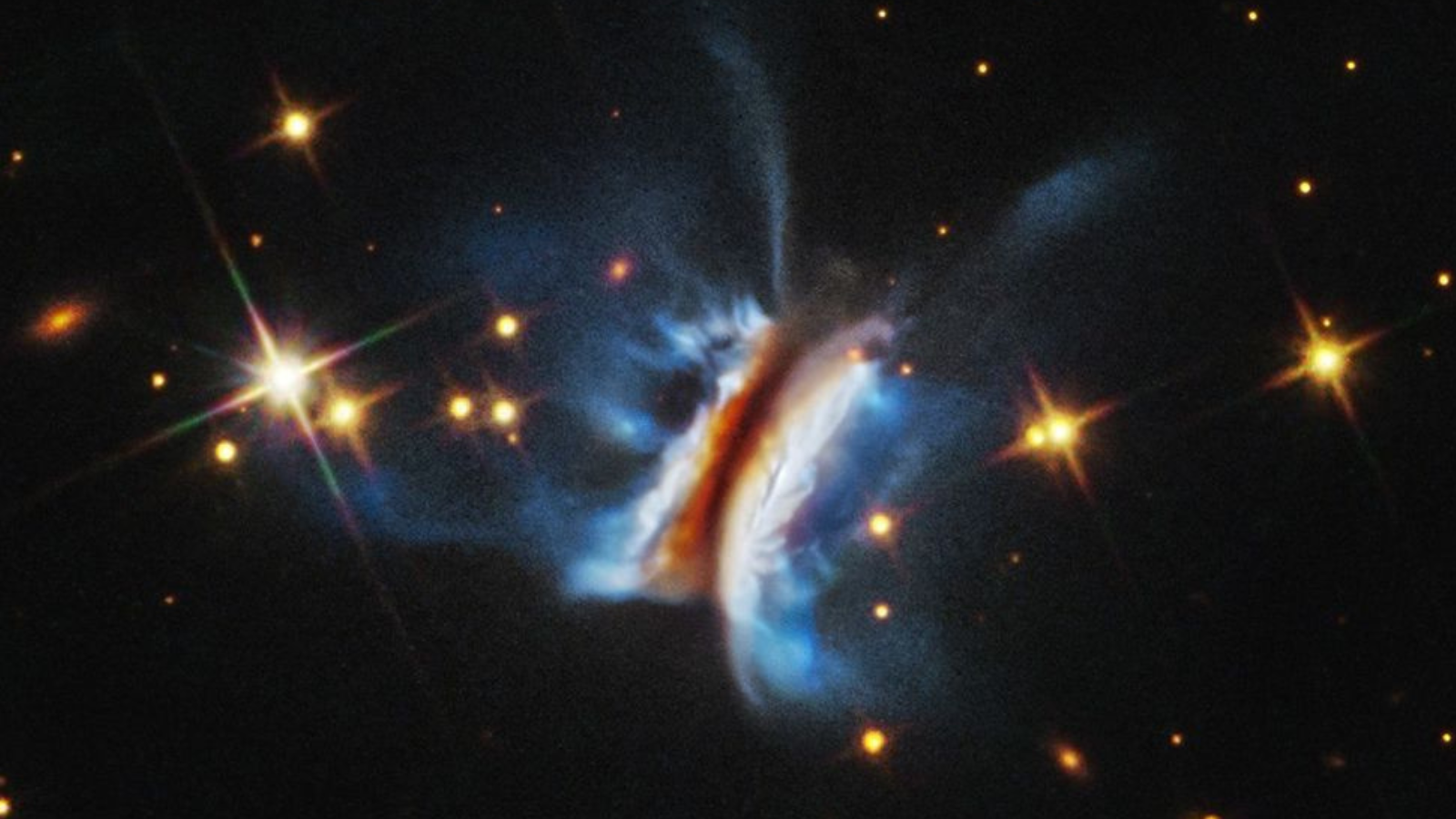'Star Wars' Gear Soars on SpaceX Falcon Rocket As 'The Last Jedi' Launches
Two "Falcons" took flight today (Dec. 15), each lofting "Star Wars" droids on new journeys into space.
A SpaceX Falcon 9 rocket lifted off from Cape Canaveral Air Force Station's Space Launch Complex 40 (SLC-40) the same day the Millennium Falcon returned to theaters in the new Lucasfilm movie "Star Wars: The Last Jedi." SpaceX CEO Elon Musk named the real-life rocket after the fictional freighter starship.
But vehicle names are not the only thing that the SpaceX launch and the new "Star Wars" film have in common. [In Photos: SpaceX Launches Used Falcon 9 Rocket, Dragon Capsule]
Launching atop the Falcon 9 at 10:36 a.m. EST (1536 GMT) was a SpaceX Dragon uncrewed spacecraft packed with supplies and science experiments for the Expedition 54 crew aboard the International Space Station. The solar-powered cargo capsule is slated to arrive and berth at the orbiting outpost early Sunday morning (Dec. 17).
Also stashed aboard the Dragon are a couple hundred mission patches depicting BB-8 and two other droids from the "Star Wars" franchise. The Millennium Falcon-shaped embroidered badges represent the science for the U.S. National Laboratory that's aboard the space station, as managed by the Center for the Advancement of Science in Space (CASIS).
"We are incredibly excited to link the inspiration brought by 'Star Wars' to our International Space Station, highlighting research that is happening right now in space," Gregory H. Johnson, president and executive director of CASIS and a former NASA astronaut, said in a statement when the mission patch was revealed in September. "This collaboration connects the scientific promise of the International Space Station to the scientific inspiration of the iconic 'Star Wars' franchise."
The patch was developed by Doug Chiang, Lucasfilm's "Star Wars" vice president and executive creative director, who oversees concept artistry and production design for the films, including the current release, "Star Wars: The Last Jedi," which hits theaters across the country today.
Breaking space news, the latest updates on rocket launches, skywatching events and more!
"The patch design is meant to evoke this same spirit of wonder when Luke Skywalker looked out to the twin suns of Tatooine," Chiang said. "The silhouetted droids and ISS set against a sunset sky with echoes of the Death Star and Millennium Falcon — two iconic 'Star Wars' vehicles that still captivate us — reflect this memorable scene."
In addition to the ball-shaped BB-8 astromech droid that appears in "The Last Jedi," the patch features K-2SO, a humanoid droid from the 2016 movie "Rogue One," and Chopper, also known as C1-10P, which appears on the animated TV series "Star Wars Rebels." The internal border of the emblem forms the outline of the Death Star from the original "Star Wars" trilogy.
Today's Falcon 9 launch marked the first time that a resupply run for NASA employed a reused Dragon spacecraft and a "flight-proven" rocket first stage. The Dragon previously flew to the space station in 2015; the Falcon 9 stage was first launched and landed earlier this year, in June. (The stage was again recovered shortly after liftoff today, making for SpaceX's 20th successful first-stage landing.)
The launch was also the first liftoff from SLC-40 since the launchpad was damaged by a failed Falcon 9 engine test, called a static fire, in September 2016. SpaceX spent approximately $50 million to repair and upgrade the U.S. Air Force launchpad in the year since the explosion.
In addition to the "Star Wars" patches, SpaceX's 13th NASA-contracted space-station-bound Dragon is carrying a Made In Space payload to test manufacturing exotic optical fiber in the microgravity environment; NASA's Total and Spectral Solar Irradiance Sensor, a new instrument that will measure the how much solar energy reaches Earth; and a Budweiser experiment that will investigate the effects of spaceflight on the germination of strains of barley used in the brewing of beer.
Robert Pearlman is a Space.com contributing writer and the editor of collectSPACE.com, a Space.com partner site and the leading space history news publication. Follow collectSPACE on Facebook and on Twitter at @collectSPACE. Follow us @Spacedotcom, Facebook and Google+. Original article on Space.com.

Robert Pearlman is a space historian, journalist and the founder and editor of collectSPACE.com, a daily news publication and community devoted to space history with a particular focus on how and where space exploration intersects with pop culture. Pearlman is also a contributing writer for Space.com and co-author of "Space Stations: The Art, Science, and Reality of Working in Space” published by Smithsonian Books in 2018.
In 2009, he was inducted into the U.S. Space Camp Hall of Fame in Huntsville, Alabama. In 2021, he was honored by the American Astronautical Society with the Ordway Award for Sustained Excellence in Spaceflight History. In 2023, the National Space Club Florida Committee recognized Pearlman with the Kolcum News and Communications Award for excellence in telling the space story along the Space Coast and throughout the world.


